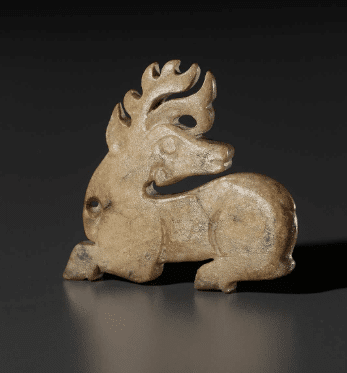Venison has long been known as a prized wild meat. Now, it’s evolving. Jade venison is the latest interpretation—bringing freshness, elegance, and modern appeal to this age-old delicacy.
In this article, we explore what jade venison really means, how it’s changing food culture, and why it’s gaining attention in fine dining and home kitchens alike.
Understanding Jade Venison
The name jade venison may sound poetic, and in many ways, it is.
“Jade” represents purity, wellness, and nature. “Venison” refers to meat from deer, typically lean and rich in nutrients. Together, jade venison stands for wild meat that’s clean, health-focused, and beautifully prepared.
In modern cuisine, it’s more than just food. It’s an experience—one that connects the earth’s natural flavors with thoughtful presentation and health consciousness.
The Evolution of Venison
Traditionally, venison was associated with rustic meals and survival hunting. Over time, chefs began experimenting with it. They refined its flavors and textures.
Now, with the jade venison concept, the meat gets a new identity. It becomes lighter, fresher, and aligned with modern dietary trends.
This isn’t about altering the core of venison—it’s about elevating it. Using herbs, clean marinades, and gentle cooking, jade venison emerges as a standout dish that appeals to both gourmet enthusiasts and health-conscious eaters.
What Makes It Different
Jade venison differs from traditional venison in a few key ways.
First, the preparation is minimalistic. Instead of heavy sauces, chefs often use herb-based infusions—think mint, basil, or green tea.
Second, the meat is typically leaner and more tender. Some farms breed deer with diet and environment in mind, focusing on producing clean meat with rich flavor.
Lastly, the dish’s presentation matters. Chefs pay close attention to color, plating, and harmony. A green herb crust, vibrant puree, or even a jade-colored broth can transform it into a visual treat.
Jade Venison in Fine Dining
More restaurants are adding jade venison to their seasonal menus. It’s often featured in chef’s specials or tasting courses.
Diners love it for the balance it offers—flavorful yet clean, rich yet digestible. Served with delicate greens, earthy vegetables, or light grains, it becomes a complete, satisfying meal.
High-end chefs embrace jade venison for another reason too. It gives them space to be creative without overwhelming the dish. The flavor of the meat stands strong on its own, making it perfect for minimalist cuisine.
Health Benefits of Jade Venison
There’s a growing interest in meats that are not only tasty but also healthy. Jade venison fits this category perfectly.
It’s naturally high in protein and low in saturated fat. It provides key nutrients like iron, zinc, and vitamin B12. When paired with antioxidant-rich herbs or green tea marinades, the nutritional profile becomes even stronger.
People following paleo, keto, or low-carb diets find it ideal. It offers energy, supports muscle health, and keeps meals light but satisfying.
Plus, it’s a good alternative to over-processed meats often found in supermarkets.
Sourcing and Sustainability
Sustainability is another reason why jade venison is gaining attention.
Deer farming is generally low impact. In many regions, wild or free-range deer are part of ecological management. That means eating venison can help control overpopulation and protect forests.
When raised on ethical farms, the meat is hormone-free and antibiotic-free. Consumers can trace the meat’s origin, ensuring transparency from pasture to plate.
This connection to nature, health, and responsibility aligns with how people eat today—mindfully and with purpose.
How to Prepare It at Home
Cooking jade venison at home is easier than you might think. The goal is to highlight the meat’s natural flavor without overpowering it.
Start with a good venison cut—like loin or steak. Use a green herb marinade. Basil, thyme, rosemary, mint, or green tea work well.
Sear it in olive oil until golden. Finish in the oven if needed. Let it rest before slicing.
Serve it with light sides—mashed peas, grilled asparagus, or sweet potato puree.
Keep sauces light. A herb vinaigrette or citrus glaze works better than heavy gravies.
Jade Venison as a Lifestyle Choice
Food trends today go beyond taste. People want meals that reflect their values. Jade venison checks all the boxes—health, beauty, ethics, and quality.
Eating this dish is about more than nourishment. It’s about making a conscious choice. Choosing something wild, clean, and elegant says a lot about how one views food.
It’s ideal for romantic dinners, holiday menus, or dinner parties. Its rare and refined nature makes it a conversation starter.
Even if you’re not a meat lover, this dish invites curiosity. It feels luxurious without being heavy.
Cultural Significance of Jade and Venison
Both “jade” and “venison” hold cultural weight. Jade is valued in many cultures for its spiritual and healing properties. It symbolizes harmony, growth, and peace.
Venison, on the other hand, was once food for royalty and hunters. It represents survival, strength, and nature.
When paired together, they become a symbol of balance. Strength meets calm. Earthy meets elegant. It’s a beautiful fusion of tradition and modernity.
The Future of Jade Venison
As consumers continue to seek out mindful dining experiences, jade term will likely grow in popularity.
Artisan farms may start producing specialty cuts. Cooking classes and culinary events may showcase it. Wellness experts could promote it for its nutritional value.
And chefs will keep pushing its boundaries—pairing it with seasonal produce, fermentations, and unexpected textures.
It’s more than a dish. It’s a direction—where food becomes art, nourishment, and storytelling combined.
Conclusion
The term jade venison may be new to some, but its essence is timeless. It brings together the purity of jade with the power of wild venison, redefining what it means to eat well.
In a world where food is increasingly processed, dishes like this offer something real. They reconnect us with nature, nourish our bodies, and awaken our senses.
Whether served at a restaurant or made in your kitchen, jade term is a reminder that food can be beautiful, meaningful, and incredibly satisfying—all at once.







